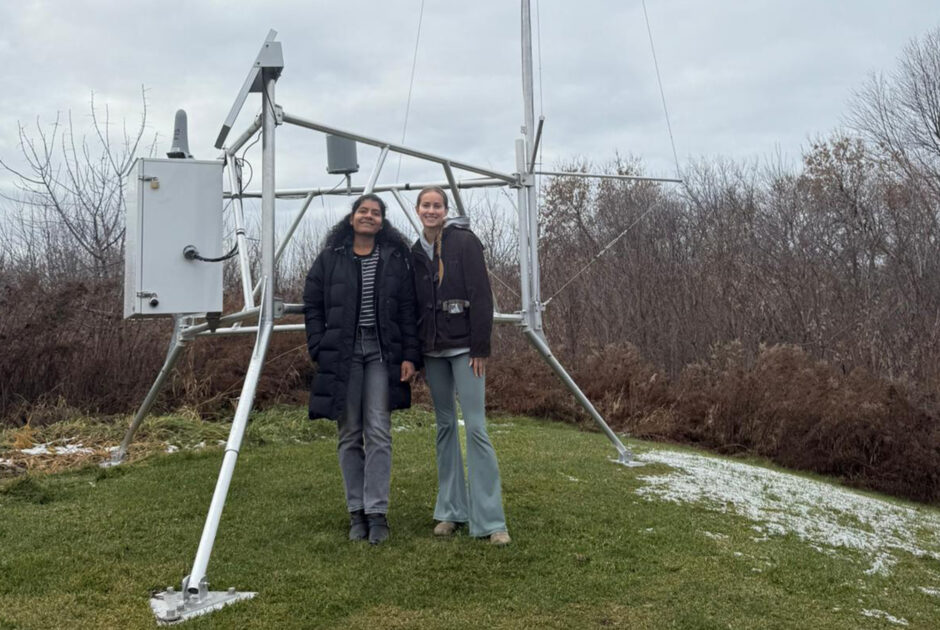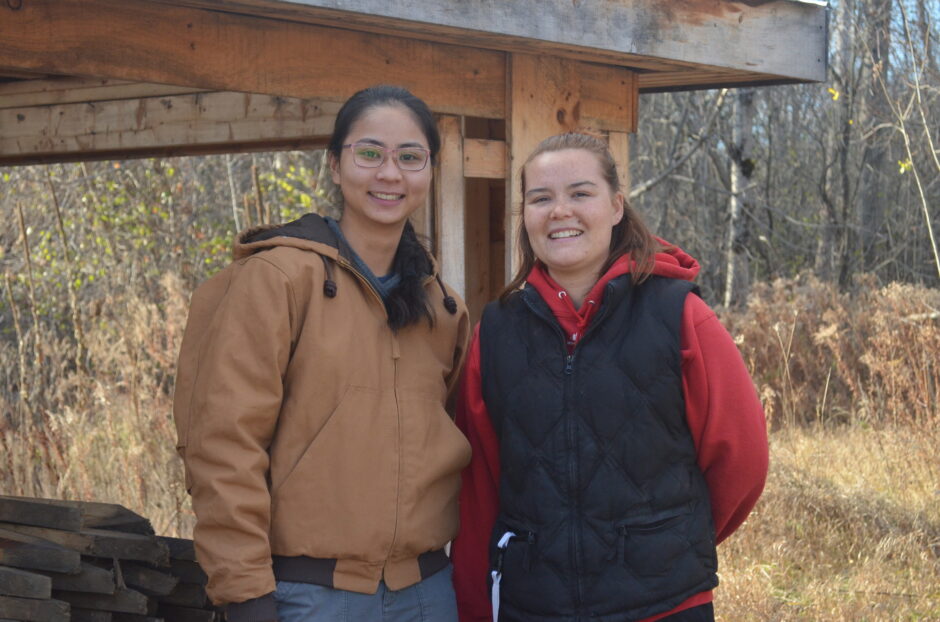Miyawaki Forest Initiative cultivates hope amid climate despair

Mckenzie Mitchell is a 28-year-old environmentalist who grew up on a farm in the Greater Toronto Area. Constantly surrounded by nature, he developed a lifelong passion for the outdoors. Unsure of the right career path, he took a leap of faith, enrolling in the environmental technician program at Algonquin College, where he became a part of the Miyawaki Forest Initiative.
The initiative uses a method of planting native species in dense layers to restore ecosystems and accelerate growth, created in the 1970’s by “Keeper of Forests” Professor Akira Miyawaki, a Japanese botanist considered one of the greatest pioneers in the realm of nature conservation.
Mitchell was inspired by the similarities between the origins of the Miyawaki method and the realities of damaged forest area in the Ottawa Valley. He decided using the approach, including its community focus, was the best way to make a difference. So he applied for the “Healthy Habitats” grant, funded by the British Home Invasive Species Council.
Kristi Beatty, the coordinator of the environmental tech program at the college’s Pembroke campus, had introduced the Miyawaki method in her ecology class, but funding was an issue.
Mitchell received just shy of $5,000 from the grant and that, along with community participation, was enough to set the project in motion.
“The funds provided us with 700 trees, 200 shrubs, as well as over 1 ton of mycorrhizal soil,” said Mitchell. “Mycorrhizal fungi are a type of fungus that are linked throughout the forest underground. Kind of like fibre optic internet. Going through the trees and plants, they help promote growth within the soil.”
But before the afforestation efforts could start, Mitchell had to get a comprehensive understanding of the method. It consists of utilizing trees that are native to the area and planting them in a dense but balanced configuration. The trees are chosen to form four structural layers: canopy, sub-canopy, arborescent trees and shrubs.
When Miyawaki was first developing his method, he noticed that in Chinju-no-mori (sacred groves of Japan) natural forests grew steadily. This led him to deduce indigenous species flourished wherever human interference was strictly disallowed, according to Crowd Foresting, an organization that collaborates with the Agriculture and Ecosystem Management Group to promote natural forests.
“We have proved that it is possible to restore quasi-natural multi-stratal forest ecosystems in 20 to 30 years if we take the ecological method,” said Miyawaki, in correspondence with the Japanese Center for International Studies in Ecology and Nagano Nature Conservation Research Institute.
Miyawaki’s method has been used in over 3,000 projects worldwide.
Mitchell said in Pembroke’s case, the forest had many overgrown Himalayan balsams and Manitoba Maples, and the soil was very low in nutrients. By introducing mycorrhizal fungi to the forest, they were able to restore nutrients needed to grow a thriving habitat, and by planting a wide range of native species in the forest, establish a tree canopy of species to support the local wildlife.
Miyawaki’s method helps restore soil health, establish a fungi network and restore the forest’s biodiversity. The method introduces native species into the environment by planting them in a hyper dense layout, creating competition between the species, which has been shown to create accelerated growth rates, according to the Tree Council organization, a registered charity based on the United Kingdom which acts on a range of innovative planting and research initiatives.
“I wanted to get my classmates together and work on a memorable project that would help us all make an impact that lasts hopefully until we’re long gone,” said Mitchell. “‘Think global, act local’ has always been a life motto for me, and this project was no different. Local change, to me, is the best way to make an impact all over the world.”
The project faced a variety of challenges, but the most pressing challenge was time management. Due to the nature of planting season the team had to make sure to plant as soon as possible, to help plant survival rates, but making sure to avoid any frost.
“This tight window left us with only a few days to prepare and plant before students would be leaving town for the summer,” said Mitchell. “It was a tight squeeze, but we were able to account for this and planting day went without a hitch.”
Now armed with supplies, knowledge and the support of professors, community members and classmates, they were finally able to plant the seed of the Miyawaki Forest Initiative. Once they had cleared the area of waste, the team was able to prepare the soil, add mycorrhizal fungi and plant native species in a single day. And according to Mitchell, the impact is already noticeable.

“We’ve noticed some amazing changes already,” he said. “We’ve noticed some restoration in the soil health thanks to the mycorrhizal fungi. We’ve raised the biodiversity by introducing over 20 species of plants that were not in the area that should have been.”
This biodiversity will serve as support and food source for wildlife native to the Ottawa Valley. Weeds will be be removed from the area for the next three years according to Mitchell, but after that maintenance period, the forest will thrive on its own.
This initiative will also be used in the environmental tech program curriculum, integrated in environmental assessment classes.
While the team reached out to many Pembroke locals who wanted to get involved in the project, some were unable to be present for planting, so they were supplied with a variety of plants and mycorrhizal soil to build their own mini-Miyawaki forests at home.
“Miyawaki was strict with his methodology. It must involve the local community,” said Mitchell. “He believed strongly that children should be educated to appreciate the environment around them. Thankfully, we had a great team of local citizens, students and horticultural society members willing to help the forest come to life.”
The Miyawaki Forest Initiative was recognized by the college and led Mitchell to winning the 2024 Changemaker award, presented during a Board of Governors meeting at the Ottawa campus. Mitchell was also awarded a $1,500 Colleges and Institutes Canada (CICan) ImpAct Climate Challenge bursary for his efforts as a student climate leader.
“Mckenzie is a true changemaker. He has embodied the values of the college,” said Julie Beauchamp, senior vice-president academic at Algonquin College.
When Mitchell graduates this winter, the project will continue to be overseen by Beatty, who hopes to potentially expand the forest onto municipal land, and for the method to be used in both the environmental tech and urban forestry programs at the college.
“I had an amazing time working on this project,” said Mitchell. “I hope to return to Pembroke in the future to a thriving forest.”








